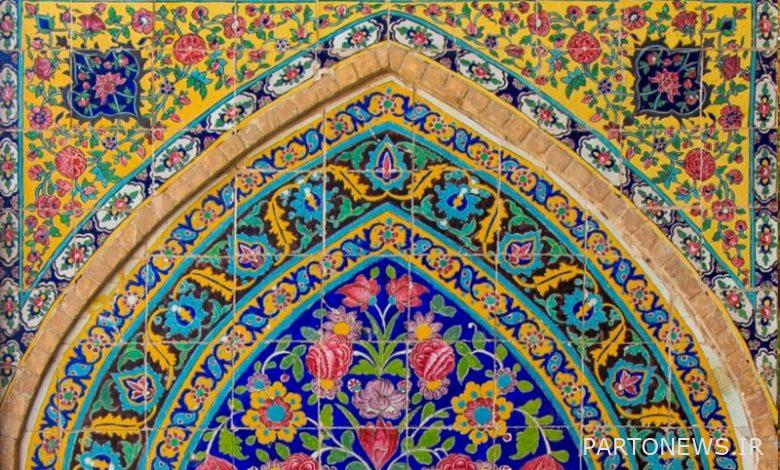Unique Qajar tile decorations in Aghabzorg Mosque in Kashan

Kashan city is one of the oldest human settlements in the north axis of the central plateau of Iran. However, studies show that the continuity of human cultural and civilizational life in this axis, has always made the people of this historical region, in different periods of history always proud and play an important role in the evolution of cultural and civilizational life of the people of the Central Plateau of Iran.
The city of Kashan, which is located in the middle of the communication route from Isfahan to Tehran and along the highway connecting the north to the south of the country, is more than seven thousand years old according to paleontologists in the excavations of ancient Silk hills. The formation of a great Islamic civilization is not hidden from anyone, but due to the fact that this historical city is located on an earthquake fault, throughout history, unfortunately, it has been destroyed several times by earthquakes, so that many valuable historical monuments of this The city was severely damaged in the great earthquake of Kashan in 1192 AH and during the reign of “Zandieh”.
Kashan in the Qajar era
Due to the occurrence of the great earthquake of Kashan on the one hand and the choice of Tehran as the throne of Qajar kings, Kashan, due to its proximity to the new capital, grew rapidly and enjoyed good growth, so that now there are many valuable works in this city It is one of the most important city centers in Iran in the field of cable architecture and its related decorations, especially in the field of mosques, historical houses and religious schools.
Decorations of Aghabzorg Mosque
The beautiful and glorious Aghabzorg Mosque was built during the years 1250 to 1260 AH by one of the elders of Kashan named Haj Mohammad Taghi Khanban in order to hold congregational prayers and hold lessons for his son-in-law Mullah Mehdi Naraghi nicknamed “Aghabzorg”. The architect of this magnificent building is Haj Shaban Kashi. The mosque complex is built of the large dome of the mosque with its two minarets made of bricks, however, in this mosque, decorations such as tiling, bedding and Mogharnas decorations have been used, which adds to the beauty of the mosque.
One of the most famous decorations of Aghabzorg Mosque in Kashan is the tile decorations in the entrance of the mosque.
The seven-color tiles of the entrance of the mosque and the Aghabzorg school have been executed with a very beautiful floral design and with a unique and very creative color combination. Also, the shadows of lights or the same processor that are visible on the rose flowers of this work, is unique in Iranian architecture in the Qajar era.
In many important buildings of Iran in the Qajar era, including the Golestan Museum Palace, very beautiful works with floral designs have been made, but in none of them have the roses been eaten as beautifully as this magnificent work.
Painting with glaze on a tile and such a performance is a very difficult task, because the gender of the glaze material is very different from the colors of the painting that is applied on canvas or paper, and the master painter can see his artwork after baking, because glaze Before cooking and after cooking, its color is different.
Unfortunately, the name of the master painter or designer is not mentioned in this magnificent work, but this lasting work belongs to the Qajar period, but it can not be said that this work was made in Kashan tile workshops or in another workshop, because in this period in Tehran, Kerman and Shiraz Golfarang tile workshops have been operating besides Kashan.
* Report from Seyed Mostafa Murooj, Public Relations Manager of Kashan Cultural Heritage, Tourism and Handicrafts Department
.

